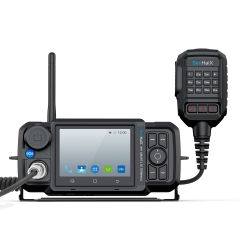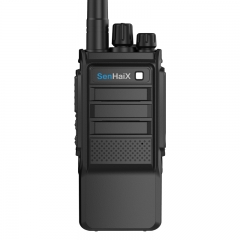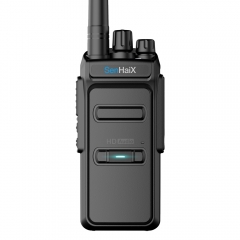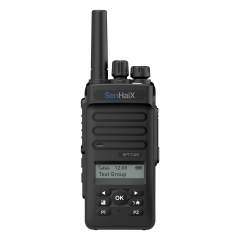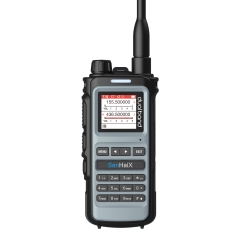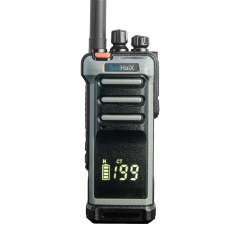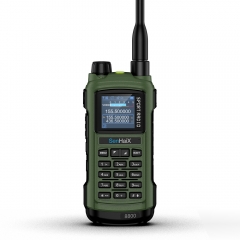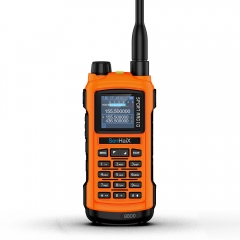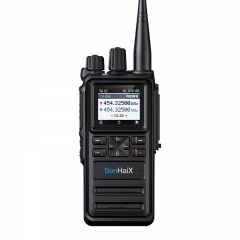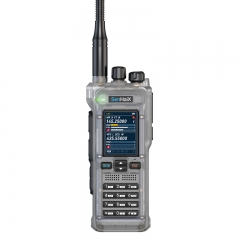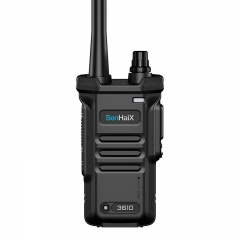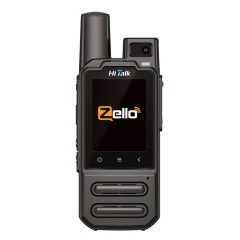VHF (Very High Frequency) two-way radios are a popular communication technology that operates in the VHF frequency range of 30 to 300 MHz. VHF radios offer several advantages and are widely used in various industries and applications. Let's discuss the features and benefits of VHF two-way radios:
Extended Communication Range: VHF radios are known for their comparatively larger communication range. Their lower frequency signals can travel longer distances, especially in open areas with minimal obstructions. This makes VHF radios suitable for applications such as outdoor activities, search and rescue operations, and large-scale events where communication over significant distances is essential.
Penetration through Obstacles: While VHF signals may not perform as well as UHF (Ultra High Frequency) signals in dense urban environments or heavily obstructed areas, they excel at penetrating foliage, trees, and other obstacles. This characteristic makes VHF radios suitable for use in wooded areas, forests, or hilly terrains, where maintaining communication despite natural barriers is crucial.
Interference Minimization: VHF radios operate on frequencies that are less prone to interference from common household appliances or other sources of electrical noise. This interference resistance allows for clearer and more reliable communication, particularly in residential or urban areas with numerous sources of potential interference.
Licensing and Availability: VHF two-way radios generally operate in licensed frequency bands, which ensures regulated and organized utilization. Obtaining the necessary licenses helps prevent overcrowding on specific channels and minimizes chances of interference from unauthorized users. Additionally, VHF radios and related accessories are readily available in the market, offering users a wide range of options to suit their specific needs.
Cost-Effective Solution: Compared to some other communication technologies, VHF two-way radios are often viewed as cost-effective solutions. They offer a balance between performance and cost, making them a practical choice for organizations with budget constraints or large-scale deployments requring multiple units. VHF radios provide reliable communication without burdening users with excessive expenses.
Compatibility and Integration: VHF radios are widely compatible with various communication systems and equipment. They can integrate with repeaters, base stations, and other radio infrastructure to extend their range and coverage. This compatibility allows for integration into existing communication networks, making VHF radios an ideal choice for organizations requiring scalable and interoperable solutions.
Diverse Applications: VHF two-way radios find applications in a wide range of industries and activities. They are commonly used by public safety agencies, such as police and fire departments, as well as by the military for their reliable and secure communication capabilities. VHF radios are also popular among outdoor enthusiasts, boaters, construction and manufacturing companies, event organizers, and transportation services, to name a few.
In conclusion, VHF two-way radios offer extended communication range, penetration through obstacles, minimized interference, licensing options, cost-effectiveness, compatibility with existing infrastructure, and diverse applications across various industries. With their robust performance and versatility, VHF radios remain a trusted choice for reliable communication in settings ranging from professional to recreational, where clear and uninterrupted communication is essential for safety, coordination, and efficiency.


















